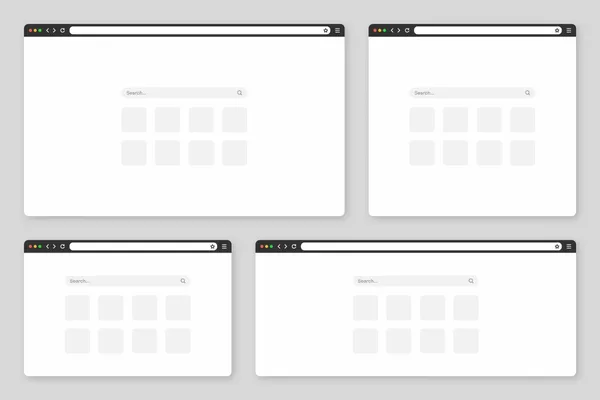A meta viewport is a piece of HTML code placed in the <head> section of a web page that tells web browsers how to scale and resize the page's content on different devices.
It allows you to create responsive websites that display correctly on a wide range of devices, from mobile phones to large computer monitors.
Viewport meta basics
How does meta viewport work?
Meta viewport works by instructing the browser how to control the dimensions and scaling of a web page.
Without this tag, mobile browsers may default to displaying pages in "desktop" mode, which may make texts and elements too small to read and interact with.
Thanks to the use of a meta viewport, the website can be scaled and adapted to smaller screens, which in turn improves navigation and accessibility.
Basic meta viewport directives
There are several basic directives in the use of a meta viewport that control how a page behaves on mobile devices. The most important of them are:
width=device-widthtells the browser to make the page width match the device's screen width.initial-scale=1.0sets the initial magnification level of the page, ensuring that text and images are immediately legible to the user.maximum-scale=1.0allows you to limit the maximum magnification of a page, which can prevent users from accidentally zooming in.
Thanks to this, regardless of whether the customer uses a modern smartphone or an older phone model, the website will display appropriately.
Advanced meta viewport uses

Adjusting the content to the pixel density of the screen
In order for pages to display optimally on devices with different pixel densities, it is important to adjust the content using the meta viewport.
Setting viewport with initial-scale=1.0 not only improves readability on mobile devices, but also allows images and graphics to look sharp on high-resolution screens.
Width and scale settings for better responsiveness
The width and scale settings in the meta viewport are important to ensure page responsiveness.
Using width=device-width allows the page to adapt to the width of the device on which it is viewed.
Additionally, controlling scale with initial-scale=1.0 ensures that the page will display at the appropriate size from the moment it is loaded, which is invaluable for users looking for the information they need quickly.
The impact of meta viewport on UX and SEO
Improved user experience through appropriate viewport
Appropriate use of meta viewport significantly affects the user experience (UX), improving readability and navigation on the website.
For example, when a patient is looking for information on a clinic's website, a properly customized viewport ensures that he or she can easily find the information he or she needs without having to zoom in or scroll through the page.
Such a positive experience not only increases the chances of contacting the clinic, but also builds trust in the brand.
Impact on search engine positioning
A well-configured viewport meta tag also has a positive impact on search engine positioning (SEO).
Responsive websites that use viewport correctly are rated better by Google algorithms, which translates into higher positions in search results.
How to set meta viewport correctly?
Examples of proper use of meta viewport
To set the meta viewport correctly, it is important to add the appropriate tag in the <head> section of the website. Here is an example that is commonly recommended and most commonly used:
<meta name="viewport" content="width=device-width, initial-scale=1">This tag tells the browser to set the width of the display area (viewport) to the width of the device and set the initial scaling level (zoom) to 1.0.
The most common errors when setting viewport
One of the most common mistakes when setting viewport is omitting this tag, which results in the default scaling of the page by the mobile browser and may lead to poor content presentation.
Another mistake is using inappropriate values, such as too large an initial-scale value, which can cause the page to appear too large or too small.
It's important to test your pages on different devices and browsers to make sure they display correctly.
Never use maximum-scale=1.0
Setting maximum-scale=1.0 may seem like a good idea to avoid unwanted user zooming, but never use it.
This limitation may make the website difficult to use for people with visual impairments who need to enlarge the text to read it.
Instead, design your page to be readable and accessible without the need to zoom in.
Content optimization for meta viewport
Testing and auditing viewport settings
Regularly testing and auditing your viewport settings is crucial to ensure your website is accessible and user-friendly on all devices.
Use web browser developer tools to check how your website displays on different screen resolutions.
You can also use online tools like Google Mobile-Friendly Test to see if your website is optimized for mobile devices.
Viewport management tools and resources

There are many tools and resources that can help you manage your viewport settings. In addition to the already mentioned Google Mobile-Friendly Test, it is worth using:
- Lighthouse from Google, a website quality audit tool that includes recommendations for responsiveness.
- Responsive Design Checker , which allows you to quickly visualize how the website looks on different devices.
- WebAIM , resources dedicated to web accessibility, including best practices for text scalability and readability.
Frequently Asked Questions
Is the viewport meta tag necessary on every website?
To ensure proper page display on mobile devices, adding the viewport meta tag to the <head> section of each page is recommended. Thanks to this, your website will be responsive, which is especially important for professionals who want to be available to their clients at any time and place.
What are the consequences of not using meta viewport on the page?
Pages without a meta viewport may display incorrectly on mobile devices, forcing users to manually scale and scroll to read the content. This may negatively impact the user experience and availability of the site.
Are there any alternatives to meta viewport?
In practice, meta viewport is the standard and most effective way to control the display of a page on various devices. Other techniques, such as responsive design using CSS, should be used in conjunction with the meta viewport and not as a replacement.
How often should I test meta viewport settings on my site?
It is worth testing the meta viewport settings whenever there is a significant change to the page design or content update, especially when you introduce new elements that may display differently on different devices. Regular audits, at least every few months, will help keep your website user-friendly.
Does the meta viewport setting affect the positioning of my website in search engines?
Yes, Google and other search engines reward responsive websites that properly use the meta viewport because they are better suited to the needs of mobile users. Correct viewport configuration can contribute to better ranking in search results.

Adam Dowgird



